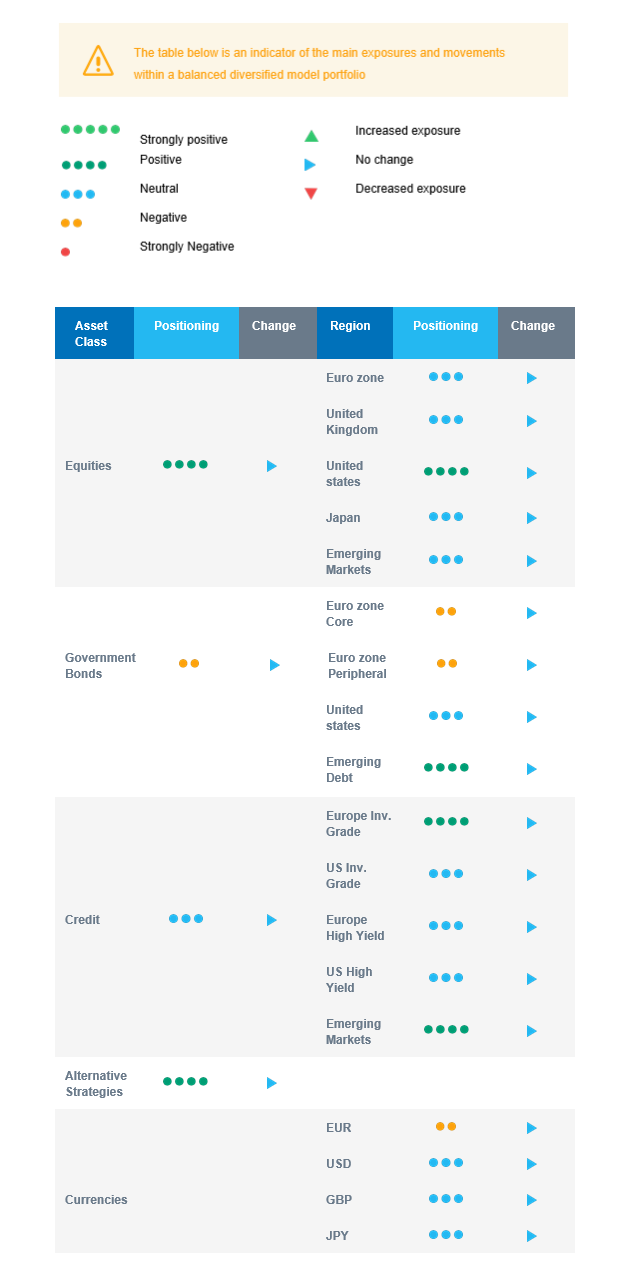Last week in a nutshell
- US Federal Reserve Chair Jerome Powell stated, "the time for moderating the pace of rate increases may come as soon as the December meeting", triggering a positive reaction on US financial markets.
- Various releases of consumer price data surprised on the downside, from Australia (up 6.9% in October vs an expected 7.6%) to the euro zone (up 10% in November vs. an expected 10.4%). Rate-hike bets were somewhat reduced…
- … but resurfaced as the US economy added a stronger-than-expected 263K non-farm payrolls. The unemployment rate remained unchanged at 3.7%, but wages spiked. A stronger-for-longer labour market means higher-for-longer rates.
- US Manufacturing ISM fell below 50 for the first time since May 2020. Production, new orders, and employment were all in contraction territory, and delivery times shortened. China's factory activity also shrank in November and the Global manufacturing PMI reading marked the fourth monthly contraction in a row.
What’s next?
- All eyes will be on the OPEC+ output decisions and the EU's sanctions on Russian oil amidst an uncertain outlook for demand. Fluctuations in energy prices remain an important driver of consumer inflation.
- ECB's President Lagarde will speak, ahead of the ECB meeting. While some data are pointing towards a potential mild recession, she recently warned that European governments' fiscal policies could lead to excess final demand.
- In the US, the Georgia Senate runoff election will oppose the Democratic senator Raphael Warnock and the Republican Herschel Walker. A democratic win would mean an outright majority in the US Senate.
- Further in the US, both the November PPI and the preliminary Michigan University data on consumer sentiment, consumer expectations, current conditions, and inflation expectations will be published.
Investment convictions
Core scenario
- Our asset allocation has become constructive on attractive price levels and is now getting support from improving fundamentals.
- The extreme market configuration in October was a buy signal. We keep a constructive, overweight equities, positioning into year-end but with a controlled risk budget.
- We expect emerging market assets in Asia to outperform. Valuation has become attractive while the region keeps long-term superior growth prospects vs. developed markets.
- We have a portfolio duration slightly shorter than the benchmark. Along with central bank monetary tightening since last spring we have gradually increased our fixed income exposure duration, via the high yield and the investment grade segments.
- Central banks must strike a balance between the fight against inflation and the risk of financial instability. Hence, the next hike will be smaller but the terminal rate in 2023 could be higher than expected some months ago.
- We expect Alternative investments to perform well in this environment.
Risks
- Upside risks include that central bank actions are nearly priced for peak hawkishness and weak sentiment and positioning. Chinese re-opening in 2023 would be a substantial support for the global economy.
- Further, governments in Europe are adding fiscal aid as the energy crisis deepens, which could mitigate its negative impact.
- Central bank anti-inflation stance is capping upside.
- Downside risks would be a new, harsh Covid-related Winter lockdown in China, a monetary policy error via over-tightening in the US or a sharp recession risk via a deeper energy crisis in Europe.
- Overall, an inflation decline and a rise in growth at some point in 2023 is limiting the market downside.
Cross asset strategy
- Our multi-asset strategy has become more constructive and overweight equities on attractive price levels but remains nimble and can be adapted quickly:
- Neutral euro zone equities.
- Neutral UK equities, resilient sector composition and global exposure.
- Overweight US equities.
- Neutral Emerging markets, but positive on Asian Emerging markets, expected to outperform as valuation has become attractive while the region keeps superior long-term growth prospects vs. developed markets. In the short term, there is room for a catch-up vs. developed markets.
- Neutral Japanese equities, as accommodative central bank, and cyclical sector exposure usually act as opposite forces for investor attractiveness.
- Positive on sectors, such as healthcare, consumer staples and the less cyclical segments of the technology sector.
- Positive on some commodities, including gold.
- In the fixed income universe, we have a slight short duration positioning.
- We continue to diversify into European investment grade credit and source the carry via emerging debt and Global high yield debt.
- In our long-term thematics and trends allocation: While keeping a wide spectrum of long-term convictions, we favour investment themes linked to the energy transition and keep Health Care, Tech and Innovation.
- In our currency strategy, we diversify outside the euro zone:
- We are long CAD and underweight EUR.
Our Positioning
Global economic growth and inflation keep slowing down, but we register overall positive surprises on growth and less upward surprises on inflation. Our current positioning is overweight equities with a preference for US and Asian Emerging regions. On the fixed income side, we keep a slight short portfolio duration and have an improving view on credit, including high yield. The latter looks attractive with a sufficient buffer for defaults. We remain allocated to commodity currencies via the CAD.

